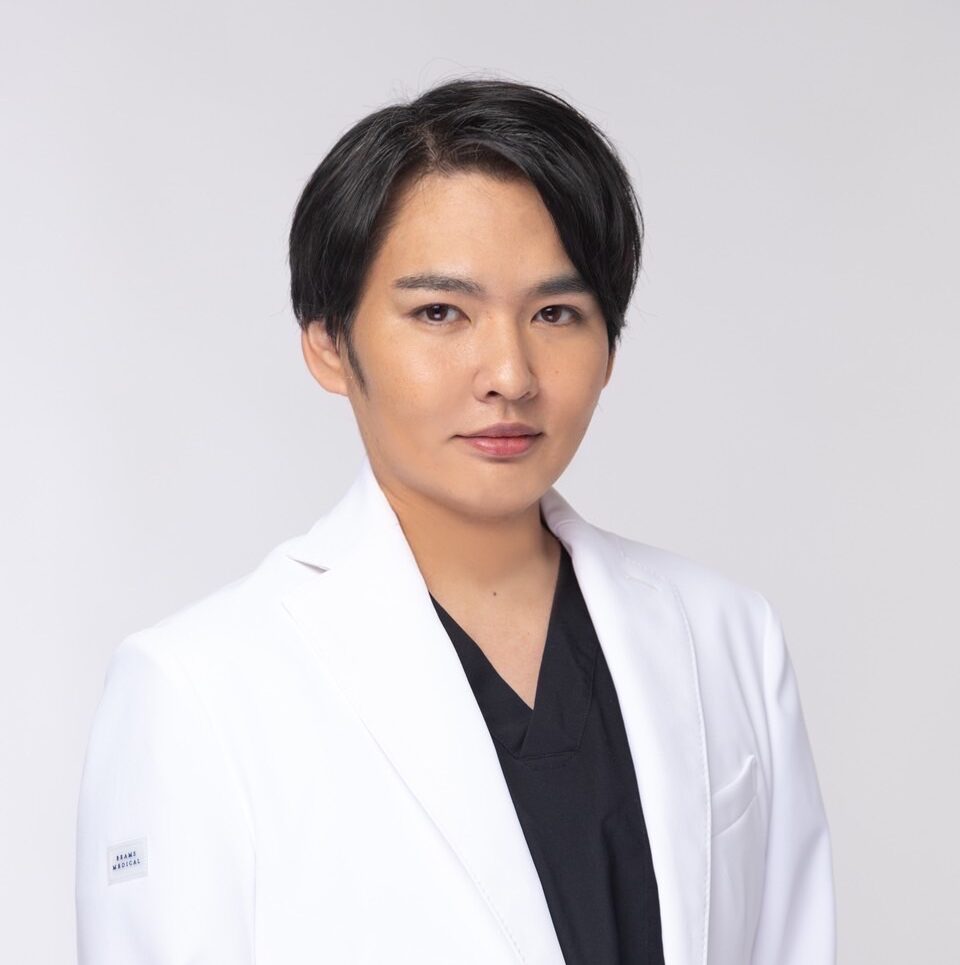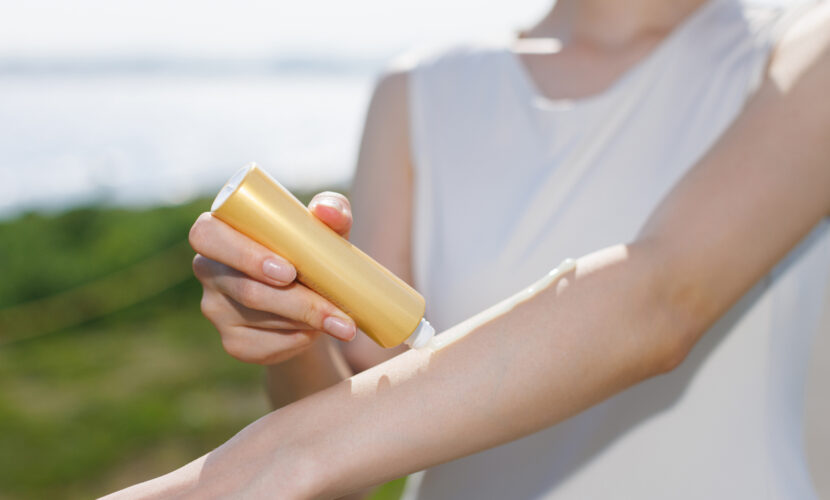UV rays can seriously affect our skin and, in the worst case, increase the risk of skin cancer and premature aging. Since activities under the sun are inevitable, the use of sunscreen is very important to protect our skin. However, it is not just a matter of using it.
Correct knowledge and use maximize protection from UV rays. Here we explain everything from how to choose a sunscreen to how to use it correctly to protect your skin.

Graduated from the Faculty of Medicine, National Kumamoto University. After serving as the director of major beauty clinics in Japan, etc., he opened Aladdin Aesthetic Clinic in 2023. He is a professional in aesthetic medicine with a doctorate in anti-aging research and many years of experience. With the motto of "Toward the realization of cosmetic medicine without lies," he aims to be the "Only One" together with his patients.
Basic knowledge of sunscreen! The meaning of SPF and PA and their importance

The most basic factors in sunscreen selection are SPF (Sun Protection Factor) and PA (Protection Grade of UVA). These are indicators of the strength of the skin's protection against UV rays, and are essential information for selecting the right product.
What is SPF?
SPF primarily indicates protection against UVB (ultraviolet rays that cause sunburn). The higher the number, the more effective the protection. For example, SPF30 is said to delay sunburn for about 30 times longer. However, a high SPF value can also be hard on the skin, so SPF 30-50 is recommended for daily use.
What is PA?
PA indicates protection against UVA (ultraviolet rays that cause skin aging), and the number of "+" indicates the level of protection (e.g., PA+++). UVA causes deep skin damage, so it is important to choose products with high PA values to prevent premature aging.
Chemical and physical sunscreens
Sunscreens fall into two main categories: chemical sunscreens and physical sunscreens. Chemical sunscreens protect the skin by absorbing UV radiation and converting it to heat or other forms of energy. They tend to be transparent when applied to the skin and are light in feel. However, they can be irritating to people with sensitive skin.
Physical sunscreens, on the other hand, contain minerals (such as zinc oxide and titanium dioxide) that reflect or scatter UV rays. They are often recommended for sensitive or atopic skin and are said to be less harsh on the skin than chemical sunscreens. However, it may cause a white cast, so it must be carefully blended during application.
How to choose a sunscreen by skin type

It is very important to consider skin type when choosing a sunscreen. Different skin types, such as sensitive, dry, and oily, have their own best sunscreens. Here we will explain in detail how to choose the right sunscreen for each skin type.
Recommended for sensitive skin
Physical sunscreens are recommended for sensitive skin. Physical sunscreens contain mineral ingredients (mainly zinc oxide and titanium dioxide) that physically block and reflect UV rays. These ingredients are very mild on the skin and are suitable for sensitive skin because they are less irritating due to UV absorbers.
When choosing a sunscreen for sensitive skin, choose a product that is fragrance-free, colorant-free, paraben-free, and alcohol-free. It is also advisable to choose products that are allergy tested or labeled for sensitive skin.
Recommended for dry skin
For dry skin, sunscreens containing moisturizing ingredients such as hyaluronic acid, ceramide, and glycerin are suitable. These ingredients moisturize the skin and prevent it from drying out while protecting it from UV rays. Cream-type sunscreens are particularly suitable for dry skin due to their moisturizing effect.
For dry skin, it is important to choose a type of product that adheres well to the skin and retains moisture for a long time. Water-resistant types of products help retain moisture in the skin while preventing sweat and water from leaking out.
Recommendation for oily skin
For oily skin, gel or milk-type sunscreens with a lightweight feel are best. These products have a non-heavy texture that absorbs quickly into the skin and reduces surface shine. Selecting products that are oil-free and claim to be non-comedogenic (non-acneogenic) will provide UV protection while preventing clogged pores.
Sunscreens that contain sebum-absorbing ingredients (e.g., silica and cornstarch) effectively absorb excess sebum in oily skin and help keep the skin smooth and dry. By choosing products containing these ingredients, it is possible to reduce shine during the day and stay comfortable.
What are the precautions for use?
As is true for all skin types, when choosing a sunscreen, it is important to read the directions for use carefully and follow the product's proper directions for use.
Sunscreens maximize their effectiveness when reapplied regularly. In addition to the use of sunscreen, combining sunscreen with physical UV protection such as hats, sunglasses, and parasols is also an effective UV-protection measure.
What is the correct use of sunscreen?

Understanding the correct use of sunscreen is just as important as how to choose it, in protecting the skin from the harmful effects of UV rays. This section details the recommended amount to use, when to reapply, the differences in application to the face and body, and how to combine it with makeup.
Approximate amount to be used
The recommended amount to use on the face is about 1/4 teaspoon (about 2 one-yen coins). This amount is the amount used to test for SPF, but be aware that the amount used may vary depending on the product used, so be sure to read the instructions carefully. If the amount of material is not enough, you may not get the SPF protection indicated on the product.
As for the amount to be used on the body other than the face, the amount to be used will vary depending on the areas of the body that need to be covered, but approximately 10ml~20ml for arms and legs is a good rule of thumb. It is especially important to adjust the amount as needed for areas prone to sunburn during the summer months and apply it thoroughly.
Timing of reapplication
In general, it is recommended that sunscreen be reapplied approximately every two hours. It should be reapplied even more frequently when engaging in activities or sports near water, especially since it tends to run off with water or perspiration.
As a special situation, it is important to reapply after swimming in the ocean or pool or after wiping yourself with a towel, even if the product is water-resistant.
Differences in application on face and body
There are two types of sunscreens on the market: face-specific and body-specific products. Products for the face are tailored to the skin type of the face, which produces more sebum, and have characteristics that make them easier to use as a base for makeup. Products with skin-friendly ingredients are preferable, especially in the selection for sensitive skin.
Combination of sunscreen use and makeup
Sunscreen also serves as a primer for makeup application. It is recommended that sunscreen be applied before makeup is applied and that it be blended completely into the skin before foundation is applied.
Cosmetics containing sunscreen ingredients are also effective, but it is ideal to use regular sunscreen in combination with these products instead of relying on them alone. Spray or powder-type sunscreens are convenient for reapplication over makeup, and can enhance UV protection without disrupting makeup.
What is UV protection other than sunscreen?

To protect the skin from UV rays, it is important to take a variety of measures in addition to sunscreen. Here are some details of effective UV protection methods other than sunscreen.
Use of sunscreen clothing
Specially treated sunscreen garments are labeled with a UV protection factor (UPF), which indicates how well the garment blocks UV rays.
Choose clothing with UPF 30 or higher to effectively protect your skin from UV rays. Choosing lightweight, breathable materials will keep you comfortable even on the hottest days.
Use of hats and sunglasses
Hats are recommended to reduce the direct UV effects on the face and scalp. Hats, especially those with wide brims, reduce the effects of UV rays not only on the face, but also on the neck and ears.
It is also important to wear sunglasses with UV protection to protect the eyes and the skin around the eyes. Sunglasses not only protect eye health, but also help prevent the skin around the eyes from aging due to UV rays.
Use shaded areas and avoid times with strong UV rays.
Naturally, it is effective to use shade as much as possible to avoid direct sunlight. Spending time in the shade or staying indoors, especially during times of high UV exposure, can greatly reduce UV exposure. For outdoor events and activities, the use of parasols or parasols is also a good option.
In addition, the intensity of ultraviolet rays varies throughout the day, especially between 10:00 a.m. and 2:00 p.m., when UV rays are at their strongest. If you go out during this time, we recommend that you take all of the above measures or, if possible, stay indoors.
UV protection through cosmetic dermatology procedures
There are many approaches to UV protection in the field of cosmetic medicine and cosmetic skin, in addition to sunscreens. These measures are especially important to prevent skin aging and pigmentation, as well as to protect the skin after treatment.
Examples include laser and light therapy to combat blemishes caused by years of UV exposure; IPL therapy is effective in improving sun-induced hyperpigmentation, redness, and dilation of fine blood vessels. It uses light energy to target specific skin problems. The treatment can also promote skin regeneration and improve sun damage, fine wrinkles, and pigmentation by stimulating collagen production in the deeper layers of the skin, not just on the surface.
Other hyaluronic acid injection treatments include direct injection of hyaluronic acid, which has a moisturizing effect, to keep the skin moist and prevent it from becoming dry and aging due to UV rays. However, when performing the above treatments, it is very important to communicate thoroughly with your doctor before and after the treatment, such as taking precautions to avoid exposure to ultraviolet rays after the treatment, and to try to take measures that are more suitable for you.
summary
Sunscreen use is one of the most fundamental steps in maintaining healthy skin. From choosing the right product to using it correctly, it is important to protect against UV rays on a daily basis. In addition to sunscreens, protective measures exist through clothing and hats, but effective use of sunscreens is essential. Through this content, you will be reminded of the importance of UV protection and take steps to maintain healthy skin.
At Aladdin Aesthetic Clinic, based on our many years of experience in cosmetic medicine and cosmetic dermatology and the knowledge of our doctoral degree, we provide counseling that aims to be "only one", offering the best treatment for each person we meet. We offer only the necessary treatments without any unnecessary information or suggestions.
Feel free to use our official LINE account for 24-hour counseling and reservations. Please feel free to contact us for free counseling for the first time or if you have any concerns.





